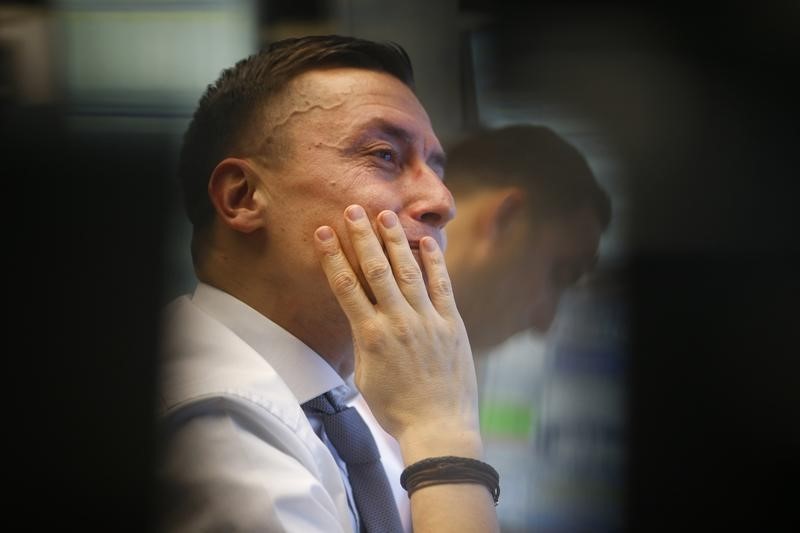Headline: "Equinor Unveils Robust Q3 Results, Advances in Renewable Energy"
Norwegian energy company Equinor ASA (EQNR) reported robust financial results for the third quarter of 2023 in its latest earnings call on October 25. The company announced an adjusted operating income of $6.9 billion and an IFRS net income of $2.3 billion for the quarter. Year-to-date cash flow from operations after tax amounted to $14 billion. Among Equinor’s strategic moves was the acquisition of a 9.8% stake in Ørsted to boost its offshore wind portfolio, alongside a total capital distribution of $14 billion for the year. The company also emphasized the strong performance of its Johan Sverdrup asset and ongoing projects contributing to its 2030 targets.
Key Highlights include Equinor’s third-quarter adjusted operating income of $6.9 billion and IFRS net income of $2.3 billion. The year-to-date cash flow from operations after tax reached $14 billion. A focus on enhancing the offshore wind portfolio led to acquiring a 9.8% stake in Ørsted. A $14 billion capital distribution for the year was announced, encompassing dividends and share buybacks. Production on the Norwegian Continental Shelf increased by 2% year-on-year, while U.S. production faced challenges.
Company Outlook: Equinor remains committed to its renewable energy goals, expecting projects like Dogger Bank A in the UK to reach commercial production by the end of 2025. The Ørsted purchase marks a strategic shift focusing on value creation over volume in renewable investments. The company anticipates maintaining Johan Sverdrup production levels into early 2025 by optimizing recovery rates.
Challenges include U.S. production being impacted by hurricanes and maintenance activities. Capital expenditures for 2024 are expected to range between $12 billion and $13 billion due to project timing and currency effects. Operational costs have risen primarily due to maintenance and inflation.
Strengths feature the high productivity of the Johan Sverdrup asset, achieving a record output of 756,000 barrels on September 21, 2023. A new contract price for Empire Wind increased from $118 to $155 per megawatt-hour, with financial closure expected by the end of 2024. Gas market prices remain around $13 per MMBtu with strong demand from Asia, notably China.
Deficiencies noted include U.S. operational disruptions due to weather and maintenance issues, leading to an adjustment in capital expenditure guidance down to $12 billion. The UK Rosebank project faces uncertainties due to a judicial review on tax conditions and emissions.
Q&A Highlights: CFO Torgrim Reitan affirmed Equinor's transition to a net-debt position by year-end, in line with prior guidance. The company plans to increase its Ørsted stake to approximately 10% and remains a long-term shareholder. Equinor focuses on diversified energy transition investments, with no current plans for additional acquisitions akin to Ørsted’s. Stakeholder feedback on the Ørsted investment has been mixed, with some viewing it as a strategic opportunity amid skepticism. CapEx increases for certain projects were discussed, attributed to currency fluctuations and project phasing.
Equinor's third-quarter performance highlighted a strategic balance between strong financial outcomes and a commitment to renewable energy investments. The acquisition of a stake in Ørsted and focus on key projects demonstrate its dedication to managing the complexities of the energy market while securing a sustainable future. Despite challenges in U.S. production and rising operational costs, Equinor's overall outlook remains positive, backed by a stable project portfolio and a clear path toward its 2030 goals.
InvestingPro Insights: Equinor’s recent financial performance and strategic moves are further illuminated by key metrics from InvestingPro. The company’s market cap is $68.97 billion, reflecting its substantial presence in the energy sector. Notably, Equinor’s price-to-earnings ratio of 7.59 suggests the stock may be undervalued relative to its earnings, aligning with the robust financial results reported for the third quarter.
One of the most striking data points from InvestingPro is Equinor’s impressive dividend yield of 11.36%. This high yield, coupled with a dividend growth of 3.82% over the last twelve months, underscores the company’s commitment to shareholder returns as highlighted in the earnings call with the announced $14 billion capital distribution for the year.
InvestingPro Tips provide additional context to Equinor's financial health:
- Equinor's high return on invested capital indicates effective use of resources for profitability, consistent with strong performance from assets like Johan Sverdrup.
- The company has maintained uninterrupted dividend payments for 22 years, reinforcing its reliability as an income stock for investors.
These insights from InvestingPro complement the earnings report by highlighting Equinor’s financial stability and shareholder-friendly policies. For investors seeking a deeper understanding of Equinor’s prospects, InvestingPro offers 15 additional tips that can provide valuable guidance on assessing the company's investment potential.


